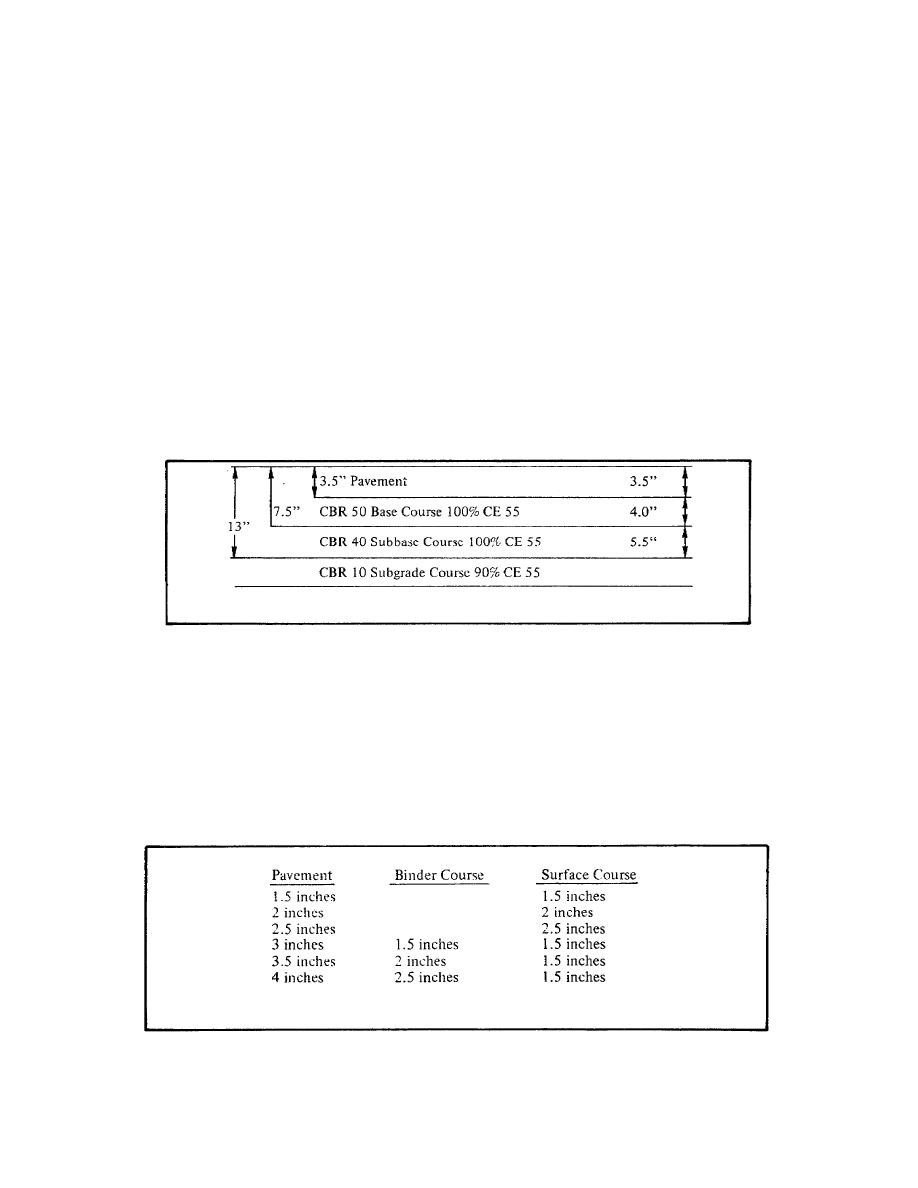
Lesson 1/Learning Event 4
Learning Event 4.
COMPACTION REQUIREMENT AND FINAL DESIGN PROFILE
Introduction
Compaction requirements must be specified for each layer of the flexible pavement. CBR values for the
various materials are based upon proper compaction. Additionally, proper compaction will reduce the
amount of settling, which will help maintain a relatively smooth, well-drained surface free of potholes
and bird baths.
Enter Compaction Requirements
Once the compaction requirements for each of the courses (materials) have been determined, they must
be entered on the final design profile. The method used to enter the compaction requirements is shown
in Figure 10.
FIGURE 10. FINAL DESIGN PROFILE
Design of Pavement Courses. A bituminous pavement may be of one or more courses depending on
the economic use of materials, stage construction factors, and job conditions. The pavement should
consist of a surface course and a binder course (and leveling course when needed) of sufficient thickness
to prevent displacement of the base course due to shear deformation, to provide long life, to be resistant
to the effect of wear and traffic abrasion, and to minimize differential settlements. The recommended
minimum thicknesses of pavements are shown in Table 9. It is recommended that all road pavements
thicker than 2.5 inches be laid in two or more courses as shown in Figure 11.
FIGURE 11. RECOMMENDED MINIMUM THICKNESSES OF PAVEMENTS
32



 Previous Page
Previous Page
